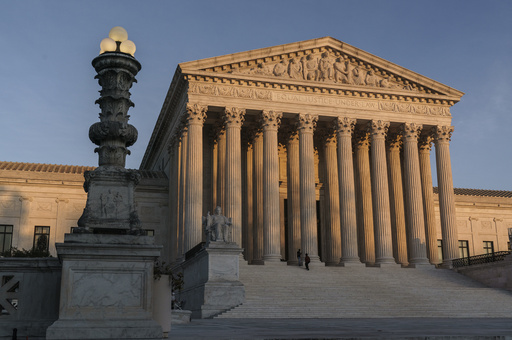
WASHINGTON — Donald Trump has appointed three justices to the Supreme Court, and if he were to secure a second term, he might have the opportunity to appoint two more, potentially leading to a court dominated by justices selected by him for decades to come.
This recent electoral outcome lessens the likelihood of the court needing to intervene in election-related disputes and may influence its approach to various significant issues, including those surrounding abortion and immigration.
The oldest justices, Clarence Thomas, 76, and Samuel Alito, 74, might contemplate retirement. Should they decide to step down, they would likely prefer Trump, a Republican, to name their successors, individuals who could be approximately thirty years younger. Such appointments would help secure a conservative majority in the court well into the mid-21st century, or possibly longer.
Trump has a robust list of potential candidates, having nominated over 50 individuals to federal appeals courts, including former law clerks of Thomas and Alito. If both justices choose to retire, it’s expected that they would stagger their departures to minimize the impact on the court’s operations, similar to how justices David Souter and John Paul Stevens left a year apart during Barack Obama’s initial years as president.
Despite his age, Thomas has publicly declared multiple times that he does not intend to retire. However, Ed Whelan, a conservative attorney and former law clerk for Justice Antonin Scalia, articulated on the National Review’s Bench Memos blog that Thomas might consider stepping down to establish his legacy through the appointment of a like-minded successor before the upcoming midterm elections. If Thomas remains in his role until shortly before his 80th birthday in June 2028, he may exceed the tenure of William O. Douglas, who served on the court for over 36 years.
There’s no certainty that the Republicans will maintain their Senate majority by then. Whelan pointed out how sensitive Thomas might be to the fate of his former colleague who opted not to retire when it was prudent. He warns that Thomas should avoid repeating the error of Ruth Bader Ginsburg, who held on until her death in office, allowing for a replacement with fundamentally different judicial views.
Ginsburg passed away in September 2020, merely weeks before Joe Biden was elected president. Trump quickly moved to nominate Amy Coney Barrett to fill the resulting vacancy, and the Republican majority in the Senate pushed her confirmation through the chamber prior to the election.
Barrett, alongside Justices Neil Gorsuch and Brett Kavanaugh (Trump’s other two appointees), participated in the pivotal decision that overturned Roe v. Wade, effectively ending the nationwide right to abortion. Working with Chief Justice John Roberts, they have further pushed conservative agendas, expanding gun rights, striking down affirmative action in college admissions, limiting the Biden administration’s climate change initiatives, and weakening federal regulations by overturning longstanding judicial precedents that were often targets for business and conservative factions.
Despite landmark decisions, the Supreme Court remains engaged with abortion-related issues, as it recently reviewed cases involving emergency abortions in states with existing bans and medication abortion access.
Under the new administration, it seems likely that the Biden guidance, which mandated that doctors provide emergency abortions to protect a woman’s life or health—even in states where abortions are generally prohibited—may be rolled back. This development could influence a case from Idaho that the court previously referred back to lower courts.
The status of mifepristone, a medication used for abortions, is also facing renewed legal challenges. Although the Supreme Court ruled to preserve access to the medication earlier in the year, abortion opponents are exploring measures a conservative administration might employ to restrict it, including enforcing a 19th-century law known as the Comstock Act, which outlaws the mailing of substances used for abortion, although Trump has yet to reveal a definitive stance on the drug.
Moreover, immigration-related cases are making their way through the courts, particularly regarding the Deferred Action for Childhood Arrivals (DACA) program initiated during the Obama administration. Trump’s attempts to discontinue DACA in his first term were blocked by the Supreme Court. Currently, a conservative appellate court in New Orleans is deliberating the legality of DACA.
One of Trump’s early battles that reached the Supreme Court was the introduction of a travel ban affecting visitors from certain Muslim-majority nations. Ultimately, the justices upheld this travel restriction after multiple revisions. During his campaign, Trump expressed intentions to reinstate the travel ban.
